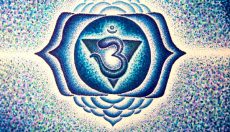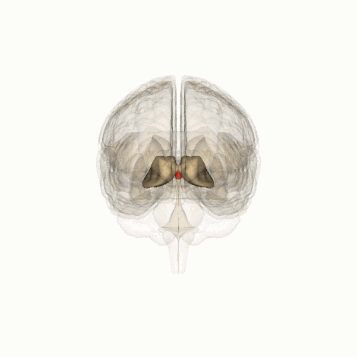Pineal gland and the third eye
Posted under: News and Science

Do you believe in human's third eye? Today we are going to talk about one part of our brain typically pointed as the "home" of our third eye. We are talking about our pineal gland. Why is this pineal gland so especial? Why is it seen as something unique? Well, this is because the pineal gland is quite unique. If we could open our brain and take a look, this "third eye" would just attract our attention. Our body likes symmetry. We have two eyes (or must we say three? Hehe), two ears, two arms (three if you are a lucky man), one nose but two nose holes... And like our body, our brain likes symmetry. You know: It's like a nut. Two hemispheres, two temporal lobes, two parietal lobes, two amygdala, two hippocampus... But guess: we only have one pineal gland. And it's perfectly centered within our brains as you can see in the picture.
 Position of our pineal gland
Position of our pineal glandIf we draw a line from this third eye to our forehead it would finish at its center, perfect targeted. And if we draw a dot in this particular point of our foreheads, you can imagine the result: Yes, it's like this red dot in the forehead of the people of India, the so called "bindi". Coincidence?
In this third eye point is where the hindu tradition places the sixth primary chakra, the ajna. Ajna, the third eye, is the gate where the energy that surround us enters the body. It's the eye of intuition and a channel to communicate with other people (like a mystic mobile phone). It's associated with vivid dreams and occult powers. But hindu people is not the only people who connect the pineal gland with something special. Christian philosophers like the famous René Descartes, one of the grandfathers of Psychology, had focus their attention on this third eye. Actually, Descartes said that the pineal gland is the point where our mind and our body connect (like a organic USB port).
 An hindu woman with bindi
An hindu woman with bindiBut why do we think about pineal gland as something special? Why is this a "third eye"?
Science has discovered that the pineal gland has functions "predicted" by the hindu tradition. The pineal gland, as you can guess, is a gland. This gland secretes substances that our body needs to regulate itself and adjust its processes to the planetary cycles and day-night cycles. This is why your body behaves differently hour by hour, season by season.
How does the pineal gland know about seasons and day hours? The pineal gland needs light to work. We have connections between our visual system and our pineal gland that "inform" the gland what time is it. When the day light is off, our third eye secretes melatonin. This substance, shortly, makes us fall asleep, feel tired and love our bed.
And some scientists say that other substances secreted by our pineal gland make us dream. The controversial Dr. Rick Strassman, who conducted research on the DMT (yes, the psychoactive chemical in ayahuasca!), says that the pineal gland products natural DMT in our brains. He linked this "inner-ayahuasca" production with vivid dreams during the famous REM phases. Yes, like hindu tradition says! And the nature itself allows us to think about the pineal gland as a mystic element of our bodies. Why? Keep reading.
 The parietal eye of a snake
The parietal eye of a snakeWe the mammals have evolved and made connections between our visual system and our pineal gland, but other species haven't. These species, like insects and amphibian, "found" another way to feed their pineal gland with light in order to make it work. In these species the pineal gland "grew" like a chimney to reach the top point of their heads and form the so called parietal eye. This parietal eye is a tiny photosensitive bean permanently pointing to the sky.
Maybe our ancestors noticed this parietal eyes in snakes and frogs and started to build such myths (or truths) around the pineal gland...


October 2, 2014